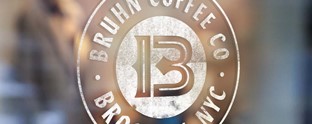Five Minutes with Joel Daly

Transform magazine spoke to co-founder of digital creative solutions agency Artemis Ward about user experience design and what it can add to creative projects, digital solutions during Covid-19 and beyond, and what the biggest challenges for brands to embrace good environmental practices.
When creating the best user experience design what does your research process look like? What are the most essential aspects of it?
The first and most essential aspect is recognizing that you are not the target audience—and even if you fit into the general category, your experiences and point of view don’t cover the breadth of the audience members. It's imperative to tune your approach to the needs of the product and its users. In any process we can use a variety of research tools--audience and stakeholder interviews, surveys, personas, user process testing, analytics and other data analysis, secondary research and more to better understand how to engage and bring value to audiences, but we don’t have an off-the-shelf, dogmatic methodology. The real danger is thinking that there is some magic recipe or checklist that you can complete and then you’re done. Useful experience research is not focused on creating a nice, impressive research report you can just put on a shelf. It should be focused on insights and understanding that drive and inform decision-making in the design process to create a great, intuitive, impactful experience.
What does user experience design bring to creative projects? How does it fit with the wider brand personality?
We believe that good design is about creating and communicating within parameters. This includes business goals, key messaging and the needs of the audience and how to deliver value to them. In good user experience design, the mindset and methods should:
- ensure that the parameters you’re defining for your creative work are well-informed,
- be based on a rich understanding of the people you hope to reach,
- and be built on a foundation to learn and grow.
User experience design should also demonstrate an understanding and empathy that itself elevates the brand. We talk a lot about how this allows our clients to ‘live their values’—they’re not making arbitrary decisions, but rather basing their actions on an understanding of people and working to make information accessible and valuable to them.
With the Covid-19 pandemic and the world under lockdown, the creative sector has relied on digital solutions even more than before. Do you think this is a growing trend? Will we see a digital-only creative world?
This could just be a semantic distinction, but as long as we live in the physical world, I don’t think we will see a digital-only world. I think it’s less a matter of replacement and more the reality of integration—for the last 20 plus years we’ve seen less and less distinction between how we see or think of digital versus non-digital. As we are more and more connected at all moments throughout the day, the lines between what constitutes ‘digital’ and everything else have blurred to the point that you may not be able to say where you saw or heard something—in the paper, scanning Twitter, in a book, on TV, radio or a podcast? Or was it from a friend—over Zoom or when chatting face to face six feet apart? Traditional art and design will always inform and be an inspiration to digital creative works, but also we see art and physical design reflecting digital elements and details as well. Ultimately creative work will continue to do what it has always done which is to reflect this moment in time and the human experience even as format and media and how we interact with it evolves.
Environmental and sustainability issues have been at the forefront of many brands’ campaigns, and it seems no one can escape taking part in the climate change fight. How does this affect brands’ packaging? What are the biggest challenges in creating a ‘less is more’ type of packaging?
Hopefully no one is trying to escape the fight but seeking opportunities to play a meaningful role in it. While it is challenging to take the sincere approach, the payoff is huge—to the brand, its reputation, its audiences and customers and ultimately everyone. People can tell when you’re being cynical and eventually it will come back to bite you. It's also the ultimate design challenge to see how that will play out with packaging both in the brand and it's products. Great designers are always looking for those opportunities to do something big and innovative and meaningful.
The biggest challenge is the status quo--the way things have always been done—and the systems that have grown to support and promote those obsolete practices. If you’re truly dedicated to doing something different, you won’t have trouble finding designers who are excited by the challenge of rethinking and evolving methods, techniques, materials and systems—especially when it’s an opportunity to help change the world for the better.
How can companies use digital to build their reputations?
First, companies have to recognize that audiences don’t necessarily see the distinction between what they have seen, heard or interacted with digitally or offline. Digital is now a critical part of the brand ecosystem, and you’re missing opportunities to engage with your audiences if you’re not at least exploring emerging platforms and opportunities. Thinking of ‘digital’ as a single bucket is missing the nuances that will make you smarter, more strategic and ultimately much more effective.
Each platform and tool in the digital world has its own distinct value. From ads to search to websites to apps to social media—and even then each individual social platform—has a different utility, personality and certainly nuanced audiences. Companies and organizations need to tune their approach, messages and methods to take advantage of each medium. An understanding of how to balance brand continuity while optimizing and tuning how you communicate is key.












